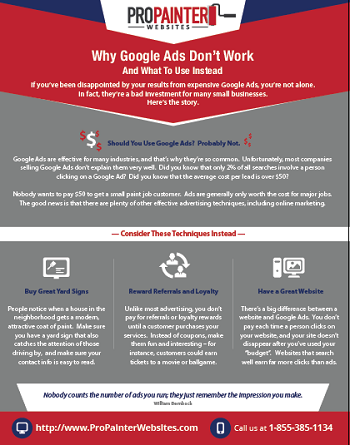Essential Seasonal Aspects Of Commercial Outside Paint: What You Need To Recognize
Essential Seasonal Aspects Of Commercial Outside Paint: What You Need To Recognize
Blog Article
Content Created By-Leach Chaney
When you're planning an industrial exterior paint project, seasonal elements can make or break your results. You'll wish to consider exactly how temperature level and moisture impact paint application and drying times. Choosing read what he said can guarantee your paint sticks properly and lasts longer. However which seasons are absolutely the very best for this type of job? Allow's check out the crucial elements that can impact your job's success.
The Impact of Temperature on Paint Application
When you're intending an industrial external paint task, the temperature level can substantially influence how well the paint adheres and dries.
Preferably, you wish to repaint when temperature levels range between 50 ° F and 85 ° F. If it's also chilly, the paint may not treat correctly, resulting in problems like peeling off or breaking.
On the other side, if it's also hot, the paint can dry out also rapidly, stopping correct adhesion and resulting in an unequal coating.
You must likewise think about the time of day; morning or late afternoon offers cooler temperatures, which can be much more beneficial.
Always inspect the manufacturer's referrals for the certain paint you're using, as they frequently offer assistance on the suitable temperature level array for optimal results.
Humidity and Its Result on Drying Times
Temperature isn't the only environmental aspect that affects your commercial exterior paint project; humidity plays a considerable duty as well. High moisture levels can reduce drying times dramatically, influencing the general high quality of your paint task.
When the air is filled with wetness, the paint takes longer to heal, which can bring about concerns like inadequate adhesion and a higher danger of mold growth. If you're repainting on a particularly humid day, be planned for extensive delay times in between coats.
It's vital to check neighborhood climate condition and strategy accordingly. Preferably, go for humidity degrees between 40% and 70% for optimal drying.
Maintaining these factors in mind guarantees your project stays on track and supplies a long-term surface.
Best Seasons for Commercial Outside Paint Projects
What's the best time of year for your industrial external painting tasks?
Spring and early fall are normally your best bets. Throughout these seasons, temperature levels are light, and humidity degrees are often lower, producing ideal conditions for paint application and drying out.
Avoid summer's intense heat, which can trigger paint to completely dry too rapidly, leading to inadequate bond and coating. Similarly, winter months's chilly temperature levels can hinder appropriate drying out and treating, risking the longevity of your paint task.
Go for days with temperature levels between 50 ° F and 85 ° F for optimal results. Remember to inspect hop over to this web-site forecast for rain, as damp conditions can spoil your job.
Preparation around these factors ensures your painting project runs smoothly and lasts longer.
Final thought
Finally, planning your industrial outside painting jobs around seasonal considerations can make a significant distinction in the end result. By scheduling job throughout the perfect temperature levels and moisture levels, you'll make certain better attachment and drying times. Keep in mind to keep an eye on neighborhood weather report and pick the correct time of year-- springtime and early loss are your best choices. Taking these actions will aid you accomplish a sturdy and expert surface that lasts.
